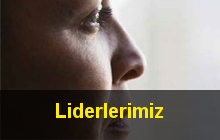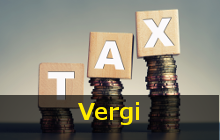
English translation
Ernst & Young Türkiye
Reduced corporate tax rate practice
"Reduced Corporate Tax" practice is regulated under article 32/a of the Corporate Tax Code no 5520 and became effective on 28 February 2009. "The Decision" was regulated with the aim of supporting technology and R&D intensive large scale investments which will decrease regional development differences and increase the competitive power and supporting sectoral clustering. With this regulation, customs duty exemption, VAT exemption, reduced rate corporate tax, investment area allocation, insurance premium employer's share support and interest support were introduced. In our article, we will explain the "Reduced Corporate Tax" practice which is one of the incentives introduced within the scope of the related Decision.
Incentive system within the scope of this Decision is classified under three main titles: general incentives, incentives to be applied for regional investments, and incentives to be applied for large scale investments. Reduced corporate tax rate regulated under the Corporate Tax Code is stipulated for investments to benefit from regional incentives and for large scale investments.
Incentives set forth within the scope of the Decision are presented below.
| Regional Investments | Large scale investments | General incentives | |
| 1st and 2nd region investments | 3rd and 4th region investments | ||
| VAT Exemption | VAT Exemption | VAT Exemption | VAT Exemption |
| Customs Duty Exemption | Customs Duty Exemption | Customs Duty Exemption | Customs Duty Exemption |
| Tax Allowance | Tax Allowance | Tax Allowance | - |
| Insurance Premium Employer's Share Support | Insurance Premium Employer's Share Support | Insurance Premium Employer's Share Support | - |
| Investment Area Allocation | Investment Area Allocation | Investment Area Allocation | - |
| - | Interest Support | - | - |
Investments can benefit from these incentives within the scope of the Decision, if only the related investment is bound to the Incentive Certificate to be received from the Undersecretariat of Treasury.
The income derived from the investments within the scope of incentive certificate to be issued by the Undersecretariat of Treasury will be subject to reduced rate corporate tax until this amount reaches the investment contribution amount as of the fiscal period when the investment is started to be operated partially or wholly.
In the Reduced Rate Corporate Tax practice, the revenue derived from the investments is taken as the basis. Accordingly, the practice does not introduce a reduction in the revenue but in the tax rate. The revenue derived from the investments is determined separately from the other revenues and are taxed at reduced rate. Since the aim is to enable government support in investment costs, the investment cost is taken into account while determining the investment contribution amount. The term during which the reduced rate will be applied depends on the proportion of investment contribution amount to the return of the investment.
Benefitting from reduced corporate tax is not limited to any time frame. Furthermore, if tax base does not emerge due to loss deduction, exempted income or other deductions, reduced rate corporate tax practice cannot be benefitted from for these periods, but in the other periods in which the tax base emerges, reduced corporate tax rate practice will be continued to be benefitted from until the investment contribution amount is reached.
Common problems faced in VAT refund control reports and solution suggestions
I. Introduction
Circular no 53 published on 27.01.2010 which includes explanations on receiving certain documents in VAT refund requests through internet and evaluation of these documents, introduced radical changes in VAT refund request practices and with this circular, "VAT Refund Risk Analysis Project" was started to be applied.
With this project, it was aimed to respond immediately to the refund requests. When the circular was first published, it was envisaged that the greatest problem for taxpayers would be experienced during the preparation of the lists required to be uploaded in the system. Lists of VAT to be deducted are needed to be issued in detail and lists of VAT incurred are needed to indicate in detail the invoices that the VAT refund amount is comprised of. Taxpayers successfully preparing and uploading to the system the mentioned lists get the great surprise when they see the results in VAT Refund Control Reports (to be referred to as "Report" hereinafter) issued by the system for the control of the lists. Quite detailed analyses are made within these reports and the results are informed to the taxpayers; and it is stated that refund requests will not be fulfilled before the issues specified under VAT Refund Control Reports are settled.
Reports are comprised of 4 sections.
- Table 1
- Table 2
- Section for Control of General Principles
- Section for Control of Special Principles
In the following section, we will address most problematic cases in terms of taxpayers with regard to the VAT Refund Control Reports.
II. Table 1
Under Table 1, general information on taxpayers requesting refund is presented.
III. Table 2
Table-2/c Taxpayers referred to tax inspection or taxpayers currently under tax inspection
Under this section, those who are in the position of secondary sub-companies, who issue forged or misleading documents or who are referred to inspection with such suspicion are listed. The companies who are under lists of VAT to be deducted and VAT incurred and engaged in direct goods or service purchase are referred to as primary sub-company and the companies from which the primary sub-companies realize goods or service purchase are referred as secondary-sub companies. There is no common practice among tax offices with regard to the settlement of the problem. Some tax offices request special-purpose Sworn Fiscal Advisory report within the scope of the VAT General Communiqué series no 84 for the settlement of the problem, whereas other tax offices do not refund the VAT amount corresponding to the purchases over a certain amount from primary sub-companies.
According to the VAT General Communiqué series no 84, in such cases, it would be sufficient for the settlement of the problem, if the taxpayer requesting refund substantiates the payment related to their purchases from primary sub-companies. Blocking and suspending these amounts is not in accordance with the regulations introduced under the mentioned Communiqué.
IV. Section for the control of general principles
A. GEK06 Controlling the compliance of invoice and declaration of sub-taxpayers
Under this section, it is listed whether the taxpayers requesting refund have any inconsistency in terms of declaration with regard to the companies included under the lists of VAT to be deducted and VAT incurred. For the problems both experienced with primary and secondary sub-companies, tax offices request explanation from the taxpayer requesting refund or ask them to realize correction accordingly.
Main reason behind this problem faced in the reports is the fact that while preparing the lists of VAT to be deducted and VAT incurred, taxpayers requesting refund write under the invoice date column, the date when the invoice has been recorded under the accounting entries rather than the date specified on the invoice.
Another reason for detecting declaration inconsistency with the sub-companies in the related query is that tax identity number of the company from which the purchase has been realized is written wrongly under the lists of VAT to be deducted or VAT incurred. Therefore, it is critical that lists are prepared accurately.
B. GEK08 Document print-out information control of the sub-taxpayers' invoices
Pursuant to the Tax Procedures Tax Code, before using the invoices, taxpayers must have the invoices printed by the printing houses preferred by the Ministry of Finance or if they have them printed by any other printing house, they must have them certified by the notary public. Printing house operators must issue information form related to the documents they print out and must distribute this form through internet in line with the principles set forth by the Ministry of Finance.[1]
Under this section, it is controlled whether document printing information of invoices issued by the companies included under the lists of VAT to be Deducted and VAT Incurred is available under the data warehouse or not. Problems often result because of the wrong entries of the serial number of invoices or invoice numbers within the lists. Furthermore, as the obligation of printing house operators to notify the Ministry of Finance on the printing information of the invoices was enforced after the date 01.04.2005, the invoices printed before this date and included under VAT Incurred lists are also listed by the system.[2]
C. GEK09 Repeated invoice control within the scope of VAT incurred list
Under this section, it is controlled whether the invoices included under the VAT incurred list are also included under the VAT incurred lists submitted in previous periods, and by this way it is prevented that VAT amount included under an invoice is refunded repeatedly. Therefore, while preparing the VAT incurred list for a period, invoice information of VAT incurred lists of previous periods, if any, must be checked and if there is VAT amounts incurred repeatedly, an adjustment should be made.
D. GEK21 Customs entry declaration (Import) control
Companies engaged in import transactions must enter the information regarding customs entry declaration in the customs computer system through their user code received from the customs administration.[3]
While preparing the lists of VAT to be deducted and VAT incurred, taxpayers requesting refund must list the VAT amounts paid during import by providing detailed information on the invoice date of the related import, invoice number, customs entry declaration number etc.
Under this section, taxpayers should check whether the import transactions have been completed by the company providing customs commission services and the procedures have been finalized by the customs officer. Furthermore, attention should be also paid while entering the information regarding customs entry declarations.
V. Section for the control of special principles
Under this section of the VAT Refund Control Report, it is detected whether taxpayers requesting refund, their shareholders or legal representatives, companies in which their shareholders or legal representatives hold shares, shareholders and legal representatives of the companies in which the taxpayer hold shares, and primary sub-taxpayers have any records for issuing or using forged or misleading documents or whether they submitted such documents. Whereas in the section for the control of general principles information regarding taxpayers under tax inspection or referred to tax inspection is included, in this section, information on taxpayers with report records is provided.
Taxpayers can settle the problems listed under this section by making the payments related to their purchases from primary sub-companies through bank transfer as specified under section III/1.1. of the VAT General Communiqué series no 84. If primary sub-company has been reported for issuing forged or misleading documents, tax office will require that these amounts are deducted from the VAT refund amount and subtracted from the VAT amount to be deducted.
Refund requests (in cash or on account) of those, in the name of whom report has been issued for issuing forged or misleading documents, if the report is dated after the date when the refund request was submitted to the tax office or the result of the report is not finalized until the refund request, are fulfilled in return for a 4-fold guarantee provision or if no guarantee is provided, the requests are fulfilled exclusively based on the result of the tax inspection report.[4] Regulations introduced on these taxpayers with the VAT General Communiqué series no 84 will be also valid for the shareholders and legal representatives of these taxpayers in the related taxation period and companies established or participated in by these shareholders or representatives.
VI. Evaluation
With the new VAT refund system started to be applied since the beginning of 2010, it is aimed to ensure labor and time saving, accelerate the VAT refund process, facilitate the inspections and establish a unity of practice throughout the country.
When the new system is evaluated both in terms of taxpayers and the tax offices, it is seen that these targets have not been achieved yet.
When the system was first started to be applied, taxpayers reported feedbacks and requested amendment or corrections. However, it is understood that the Ministry has not responded to these requests and persisted on the current form of the system. What taxpayers requesting refund should do from now on is to accept the existence of the new VAT refund system, adjust their accounting systems in accordance with this system as soon as possible and be in coordination with their affiliated tax office both before and after they upload the lists to the system.
[1] Regulation on Printing and Distribution of Documents Used by Taxpayers as per Tax Procedures Code issued based on Repeated article 257 of the Tax Procedures Code










 Başa Dön
Başa Dön